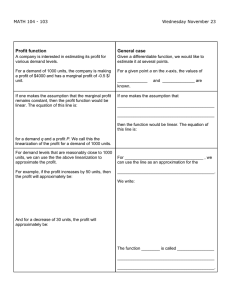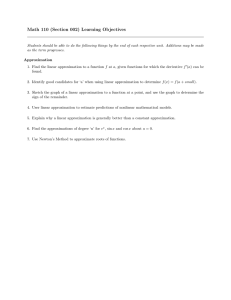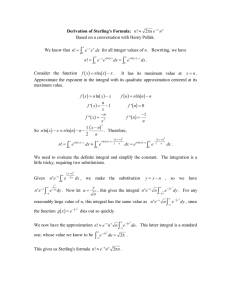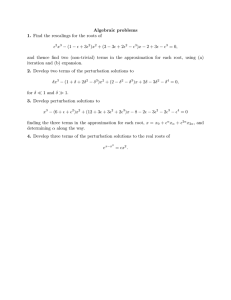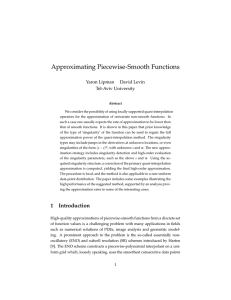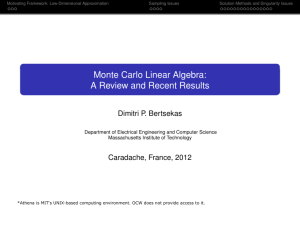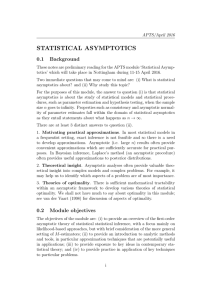Asymptotics final
advertisement
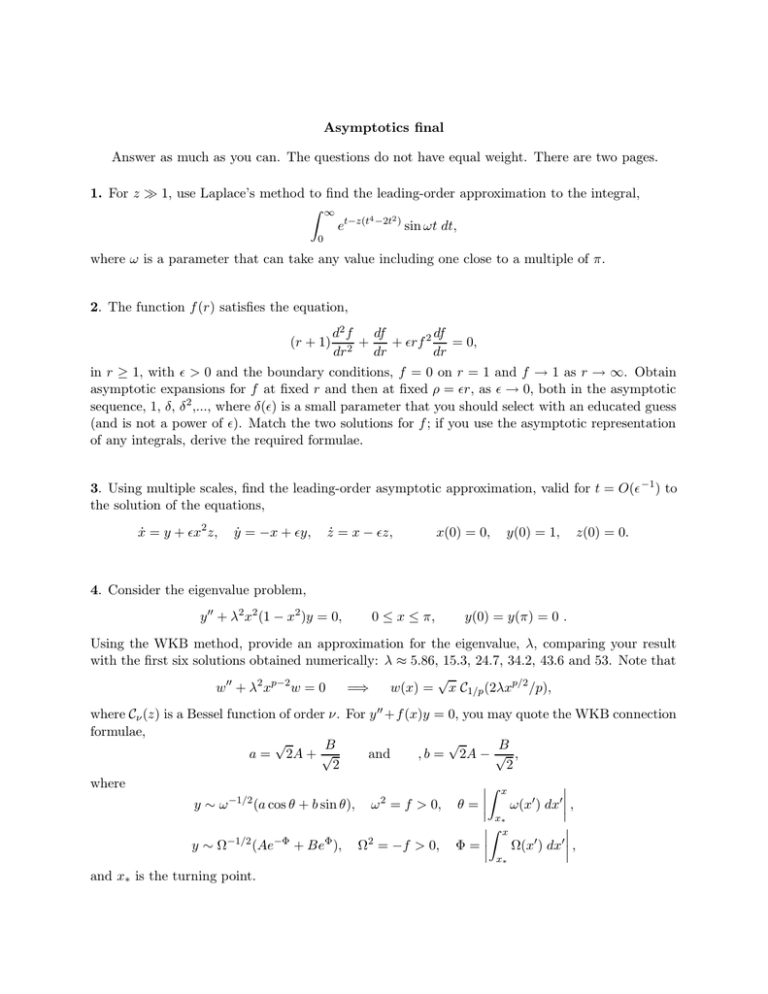
Asymptotics final Answer as much as you can. The questions do not have equal weight. There are two pages. 1. For z 1, use Laplace’s method to find the leading-order approximation to the integral, Z ∞ 4 2 et−z(t −2t ) sin ωt dt, 0 where ω is a parameter that can take any value including one close to a multiple of π. 2. The function f (r) satisfies the equation, (r + 1) df df d2 f + + rf 2 = 0, dr 2 dr dr in r ≥ 1, with > 0 and the boundary conditions, f = 0 on r = 1 and f → 1 as r → ∞. Obtain asymptotic expansions for f at fixed r and then at fixed ρ = r, as → 0, both in the asymptotic sequence, 1, δ, δ 2 ,..., where δ() is a small parameter that you should select with an educated guess (and is not a power of ). Match the two solutions for f ; if you use the asymptotic representation of any integrals, derive the required formulae. 3. Using multiple scales, find the leading-order asymptotic approximation, valid for t = O( −1 ) to the solution of the equations, ẋ = y + x2 z, ẏ = −x + y, ż = x − z, x(0) = 0, y(0) = 1, z(0) = 0. 4. Consider the eigenvalue problem, y 00 + λ2 x2 (1 − x2 )y = 0, 0 ≤ x ≤ π, y(0) = y(π) = 0 . Using the WKB method, provide an approximation for the eigenvalue, λ, comparing your result with the first six solutions obtained numerically: λ ≈ 5.86, 15.3, 24.7, 34.2, 43.6 and 53. Note that √ w00 + λ2 xp−2 w = 0 =⇒ w(x) = x C1/p (2λxp/2 /p), where Cν (z) is a Bessel function of order ν. For y 00 +f (x)y = 0, you may quote the WKB connection formulae, √ √ B B a = 2A + √ and , b = 2A − √ , 2 2 where Z x −1/2 2 0 0 y∼ω (a cos θ + b sin θ), ω = f > 0, θ = ω(x ) dx , x∗ Z x 0 0 −1/2 −Φ Φ 2 Ω(x ) dx , y∼Ω (Ae + Be ), Ω = −f > 0, Φ = x∗ and x∗ is the turning point. 10 9 8 I3/2(k) 7 6 5 4 3 2 1 0 0.1 0.2 0.3 0.4 0.5 k 0.6 0.7 0.8 0.9 5. (a) For the integral, Iβ (k) = Z 1 0 x(1 + x) dx , (1 − kx2 )β with β > 0, find the general term in an expansion for k 1. Sketch the result against k for 0 ≤ k ≤ 1 and β = 32 , using terms upto O(k 7 ) of the sequence, and compare the result with the numerical computation shown in the figure; use a printout of the figure if needed! (b) Compute Sn ( 34 ) for n = 0 to 7, where Sn (k) is the (n + 1)−term approximation of I 3 (k). 2 Use the Shanks transform with these eight numbers to generate five improved approximations of I 3 ( 43 ). Iterate the Shanks transform to find even better approximations, and compare your result 2 with the numerically determined value, I 3 ( 34 ) ≈ 2.3877. 2 (c) Next, from the k 1 series solution find the nearest singularity to the origin and its type, α. Returning to the integral, make a second approximation about the singularity, obtaining the first two terms of the approximation I 3 ∼ J0 + Jα (1 − k)α . Add a sketch of the second approximation 2 to the plot. (d) Use multiplicative and additive extraction to remove the nearest singularity in the smallk approximation for β = 23 , keeping terms upto and including order k 2 . Add both improved approximations to your picture. (e) Construct the (2,2) Padé approximant from the k 1 series solution, and add that to the picture for β = 3/2. At what value of k does this approximant place the singularity?
